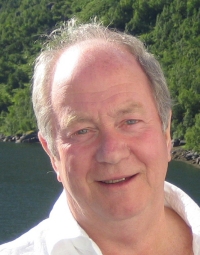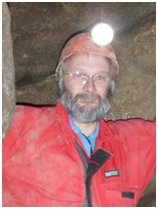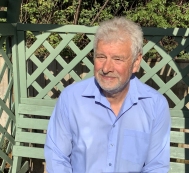ECTON HILL PARTNERSHIP
The Ecton Hill partnership brings together many of the stakeholder organisations with a direct interest in Ecton Hill and the historic mines beneath it. Representatives meet twice yearly to monitor activities and to coordinate collaboration among them.
These organisations include
Ecton Mine Educational Trust – owns some of the land, and the mineral rights across much of the hill, and is responsible for maintenance and safety of the mineral workings as well as the Geoff Cox training centre. The Trust coordinates education and research activities in and around the mines.
Ecton Hill Field Studies Association – provides education, through a range of structured courses, for schools and other organisations at all levels.
Peak District National Park Authority – has an overall responsibility for ensuring safe and sustainable management of the environment within the National Park
Historic England – Historic England are the public body that helps people care for, enjoy and celebrate England’s spectacular historic environment. We are the government’s advisor on the historic environment and seek to protect, champion and save the places that define who we are and where we’ve come from as a nation. The Copper Mines at Ecton Hill are a nationally important archaeological site, legally protected as scheduled monument. Our role with scheduled monuments is to monitor condition, advise on change and the management of these sites, and administer the Scheduled Monument Consent system on behalf the Department of Culture, Media and Sport.
Natural England – is responsible for ensuring that management and activities are consistent with the status of most of Ecton Hill within Sites of Special Scientific Interest (SSSI)
The National Trust – as owner of the historic Boulton and Watt winding-engine house has a direct interest in both conservation and archaeological research on, in, and around the hill.





 The powder house, where dangerous explosives were stored. This small shed was placed well away from other buildings and was erected in 1884. The interior was originally lined with wooden panels as an added precaution against accidentally creating sparks.
The powder house, where dangerous explosives were stored. This small shed was placed well away from other buildings and was erected in 1884. The interior was originally lined with wooden panels as an added precaution against accidentally creating sparks.

 was lowered on one side and it was converted to a field barn. The steam engine was located in the far half of the building, while its boiler was in the near half. A short distance upslope there was a small reservoir pond for the boilers fed by water brought up from the mine.
was lowered on one side and it was converted to a field barn. The steam engine was located in the far half of the building, while its boiler was in the near half. A short distance upslope there was a small reservoir pond for the boilers fed by water brought up from the mine.


 In the 1760s-80s the internationally important Deep Ecton Copper Mine made a fortune for the Dukes of Devonshire. The first copper was mined here long before, in the Bronze Age over 3,500 years ago. The Dukes, who owned northern and western parts of the hill, had their mines worked in-house for over 50 years from 1760. From the 1820s private mining companies embarked on a fruitless search for further rich ore deposits. The mines were finally abandoned in 1889. While the 19th century ventures lost investors’ money, with them at best only finding other peoples’ leavings, they kept local miners in work for decades.
In the 1760s-80s the internationally important Deep Ecton Copper Mine made a fortune for the Dukes of Devonshire. The first copper was mined here long before, in the Bronze Age over 3,500 years ago. The Dukes, who owned northern and western parts of the hill, had their mines worked in-house for over 50 years from 1760. From the 1820s private mining companies embarked on a fruitless search for further rich ore deposits. The mines were finally abandoned in 1889. While the 19th century ventures lost investors’ money, with them at best only finding other peoples’ leavings, they kept local miners in work for decades.


 Peter has nearly 50 years experience mostly at the sharp end of the minerals industry. He is a metallurgist who started in the steel industry prior to his degree at Cambridge University. He held senior positions with Anglo American on the Zambian Copperbelt, and at Glebe Mines fluorspar operation in the Derbyshire Peak District; and has been an independent freelance since 2000. He has had connections with Ecton Mine and Geoff Cox since the mid-1980s. He is Secretary of The British Aggregates Association, a member of the CBI Minerals Group and the UK National Minerals Forum; and has various business interests in the industrial minerals industry in the UK, Europe and globally; and is also a Director of MAUK (Mining Association of the UK) and Amemptos Music.
Peter has nearly 50 years experience mostly at the sharp end of the minerals industry. He is a metallurgist who started in the steel industry prior to his degree at Cambridge University. He held senior positions with Anglo American on the Zambian Copperbelt, and at Glebe Mines fluorspar operation in the Derbyshire Peak District; and has been an independent freelance since 2000. He has had connections with Ecton Mine and Geoff Cox since the mid-1980s. He is Secretary of The British Aggregates Association, a member of the CBI Minerals Group and the UK National Minerals Forum; and has various business interests in the industrial minerals industry in the UK, Europe and globally; and is also a Director of MAUK (Mining Association of the UK) and Amemptos Music. I am an exploration and mining geologist (C. Geol) with over 25 years of experience in the deep geological disposal of radioactive waste and 7 years of experience of exploration, environmental impact assessment and mining feasibility for the Kayelekera uranium deposit in Northern Malawi, Africa. I retired from the British Geological Survey in 2016 and am currently a member of the Government’s Committee on Radioactive Waste Disposal. I undertook a PhD on caves and mines in the Peak District and, as an active caver and mine explorer, have been studying the underground world of the Peak District since the mid 1970’s, including the mines of the Ecton Area. I am a director (editor) of the Peak District Mines Historical Society and the mine manager of their Temple Mine in Matlock Bath.
I am an exploration and mining geologist (C. Geol) with over 25 years of experience in the deep geological disposal of radioactive waste and 7 years of experience of exploration, environmental impact assessment and mining feasibility for the Kayelekera uranium deposit in Northern Malawi, Africa. I retired from the British Geological Survey in 2016 and am currently a member of the Government’s Committee on Radioactive Waste Disposal. I undertook a PhD on caves and mines in the Peak District and, as an active caver and mine explorer, have been studying the underground world of the Peak District since the mid 1970’s, including the mines of the Ecton Area. I am a director (editor) of the Peak District Mines Historical Society and the mine manager of their Temple Mine in Matlock Bath. mongst geologists and others involved in the application of geoscience, particularly through the promotion of professional titles such as CEng, CGeol, and EurGeol. She has served on the Council of the Geological Society of London and is a past President of the European Federation of Geologists. For many years, she has been a member of the Pan European Reserves and Resources Reporting Committee (PERC).
mongst geologists and others involved in the application of geoscience, particularly through the promotion of professional titles such as CEng, CGeol, and EurGeol. She has served on the Council of the Geological Society of London and is a past President of the European Federation of Geologists. For many years, she has been a member of the Pan European Reserves and Resources Reporting Committee (PERC). Phil in Organic Chemistry, Nottingham Uni 1977-79, awarded 1981
Phil in Organic Chemistry, Nottingham Uni 1977-79, awarded 1981 I am a geoscientist with more than 45 years of experience. After working as a mine geologist in the Yorkshire Coalfield for 12 years, I moved on to seismic exploration for coal, potash and other minerals focussing on seismic interpretation and delineating geological structure to aid mine planning. My prospect experience includes projects in UK, Spain, Turkey, Australia, Africa, Argentina and Canada.
I am a geoscientist with more than 45 years of experience. After working as a mine geologist in the Yorkshire Coalfield for 12 years, I moved on to seismic exploration for coal, potash and other minerals focussing on seismic interpretation and delineating geological structure to aid mine planning. My prospect experience includes projects in UK, Spain, Turkey, Australia, Africa, Argentina and Canada. ng and engineering around the world. Although I am now retired I continue to hold Board appointments with national and international regulatory and standards organisations which I find professionally stimulating and thoroughly rewarding.
ng and engineering around the world. Although I am now retired I continue to hold Board appointments with national and international regulatory and standards organisations which I find professionally stimulating and thoroughly rewarding.